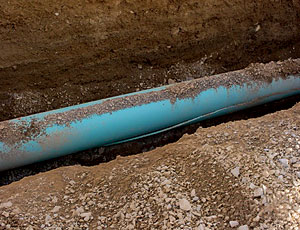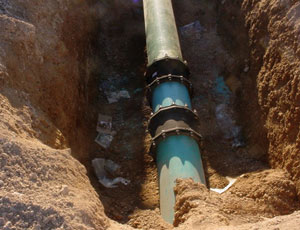A three-year-old “whistle-blower” suit unsealed in a federal district court on Feb. 8 claims that a leading manufacturer of polyvinyl chloride pipe widely used for utility collection and transmission lines falsely claimed its products met the performance specifications of industry regulators. It asserts that up to 50% of the pipe produced between 1997 and late 2005 is susceptible to breakage and premature failure at pressure loads below the labeled rating.


The suit charges J-M Manufacturing Co. Inc., Livingston, N.J., now trading as JM Eagle, Los Angeles, and its parent company at the time, Formosa Plastics Corp., also of Livingston, with changing manufacturing processes and chemistry without resubmitting products for certification by organizations whose stamps it bears, including Underwriters Laboratories, the American Water Works Association, ASTM International and Factory Mutual. It claims those changes degraded the products and reduced their longitudinal tensile strength to below the rated minimum of 7,000 psi.
The suit also charges J-M Manufacturing with manipulating certification tests for a new line of products by specially producing test specimens and pre-testing subsets to ensure success, both of which it says violates certification rules.
Marcus Galindo, a spokesman for JM Eagle, which was know as J-M Manufacturing until a 2007 merger with PW Eagle, denies the accusations and characterizes the whistle-blower as a disgruntled employee dismissed for soliciting kickbacks from a contractor during negotiations over a product-defect claim.
The whistle-blower is John Hendrix, of Clifton, N.J., a former J-M product assurance engineer. According to the lawsuit, Hendrix was fired in November 2005, days after sending a memo to management “highlighting the fact that the tensile strength of J-M’s PVC pipe was below that required by Underwriters Laboratories to qualify for the ‘UL’ mark stamped on its pipes.”
The suit does not cite any failures due to alleged tensile strength deficiency. It only offers a probability that as much as 50% of pipe in question is susceptible to swelling, cracking or bursting at pressures below 7,000 psi, and that service life of the pipe will not meet owner expectations.
Mary A. Inman, plaintiff’s lead attorney with Phillips & Cohen LLP, San Francisco, says her client is suing under federal and state false-claims acts.
Inman says, under false-claims statutes, a claim is filed with a presumption that jurisdictions with such laws may want to join the litigation. The claim is sealed for a “dark period,” while the parties investigate and decide whether to sign on. The dark period, which just ended for this case, was unusually long, she says, as many potential litigants studied its assertions.
Some jurisdictions chose not to be actively involved, but Delaware, Nevada, Tennessee, Virginia and 43 water districts and municipalities—39 of them in California—have signed on. The U.S. Dept. of Justice opted out. But even jurisdictions that don’t pursue a claim may share in the damages, Inman says. Should Hendrix prevail, he will be eligible to share in the recovery, which can be up to $11,000 for each claim, plus three times the damages sustained by the government, with up to 30% of that going to the whistle-blower.
Inman says some jurisdictions do not become active in such cases, which require staffing and resources, if they feel their interests will be served by others. JM Eagle’s Galindo notes that the federal government investigated the company for three years and, in the end, declined to intervene. “It is important to note,” Galindo says, “during that time, the federal government never stopped purchasing pipe from us.”
One jurisdiction that did sign on is the state of Nevada, where Gus Nunez, director of public works, says they had so many breaks in a 7,000-ft-long, 18-in.-dia. J-M-brand PVC water main installed in 1998-99 in Indian Springs, they abandoned it. “There were 10 failures from March 2005 to March 2006, including three failures within a month,” he says. “Our decision was to replace the pipe.” He blames manufacturing defects. A J-M representative who came to inspect blamed the failures on “an installation problem.”
The state recently completed installing a $1.8-million, ductile-iron replacement.



Post a comment to this article
Report Abusive Comment